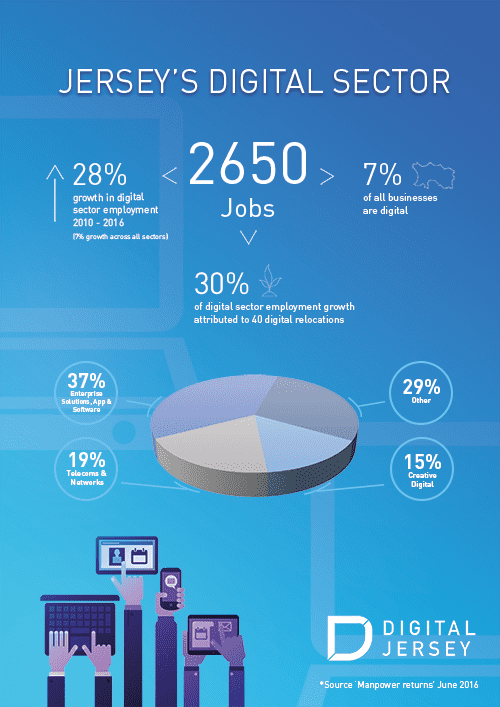
Despite significant public and political interest in the digital sector, until recently there was no quantitative data on its size, growth or dynamics. As these figures are so important when making informed decisions and measuring the impact of policies, over the coming months I will be publishing a series of blogs that look to explain the findings from this data in depth. The blogs will explain what the new data means for our island, from the contribution of FDI, to women’s role in tech. I would like to begin by explaining how and why we got to where we are now.
To many, the financial crisis of 2008 demonstrated the impact of high risk, low probability events. For Jersey, it encouraged interest in diversification into new sectors that would strengthen the island’s economy. This sectorial diversification would need to be in industries with a low footprint, gross value added (GVA) per-person above the national average, be export oriented, and offer government a secondary tax base outside of financial and legal services; no small feat! With these requirements in mind, it was decided that the digital sector was most likely to fit the brief, and so Digital Jersey was established to act as an accelerator for the island’s digital ecosystem.
In recent months we have been working with the Statistics Unit and Population Office to calculate employment contribution made by ‘digital’ to Jersey, so that going forward we can measure the effect that any changes have on the economy and respond accordingly. Using the UK Office for National Statistics’ (ONS) publication ‘What Defines the Digital Sector’, we identified digital businesses in Jersey that are part of, or extend from the ICT industry, ranging from telecoms, to digital media, software publishing and computer manufacturers. We then updated the Standard Industrial Classification (SIC) codes of local digital businesses from 2003 to 2007 to comply with international standards and to better reflect the organisations’ activities.
It is important to note that we did not make an attempt to measure the GVA of the digital economy or the value added of digital to the wider economy. There are many people working in digital occupations that are not part of the digital sector and many more making use of digital technology who do not work in digital professions. We did however include individuals who work in e-commerce, due to the success Jersey has had in producing household names such as Feelunique and the now dissolved Play.com.
So what now? Using the results of the findings as a benchmark, Government and Digital Jersey can now monitor the impact of their policy decisions and progress towards achieving sectorial diversification.



